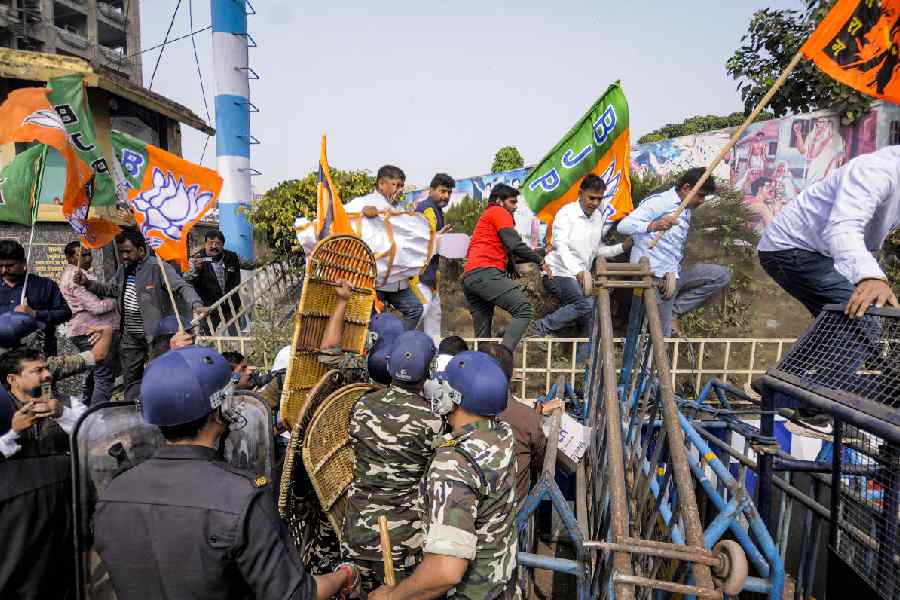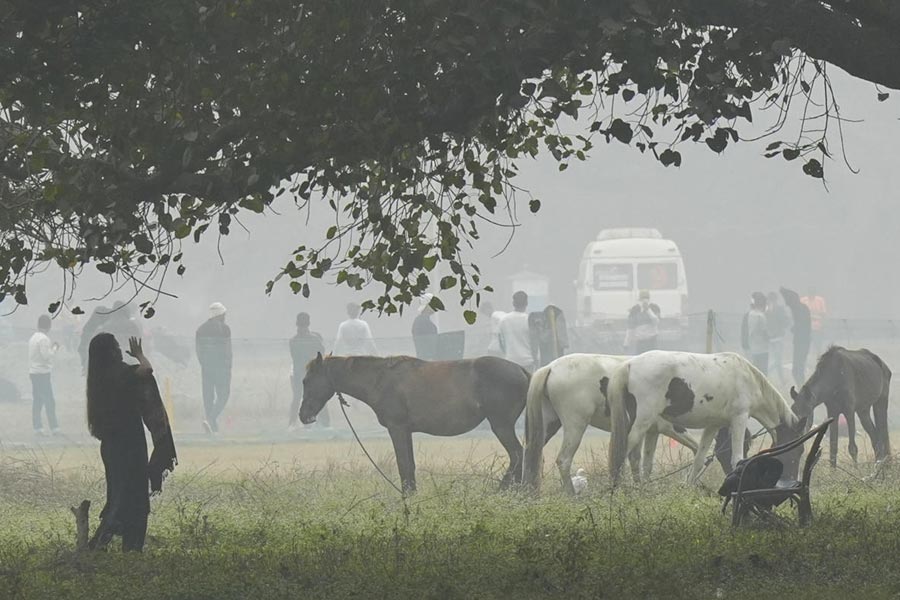In his first-floor office overlooking the cramped, narrow street behind India Exchange Place, Mahendra Kumar Gupta sits surrounded by thousands of publications. He owns Rajendra Library, publisher of Shri Madan Gupter Full Panjika, one of the oldest panjis (almanacs) in Bengali.
On his small DVD player, he plays the promos of his panjika — after the Gupta Press Panjika, a leading name in the more popular Chandrasiddhanta system. The slick promos aired on Bengali channels feature faces from the television serial and jatra world, including a young actor seated in front of a computer endorsing the panji as “Bangalir bhorsa”.
The panjika is the centrepiece of Rajendra Library, which, according to Gupta, is a leading “street publisher”, or bot-tola publisher, in the city. This publishing derives its name from the bot-tola in Chitpur where the cheap books sold from in the nineteenth century, but “penny publishing” now is far removed from the shade of a banyan tree.
The panjika epitomises the change. Gupta does not know how many titles he publishes — from Markendeya Puran to Manasa Puja Paddhati to Ratitantram to Reiki Shikhun to Mushroom Chash, many of which are available at less that Rs 10. But for Rajendra Library, the panjika is their “brand”.
The panji, which came out in the 1930s, has not changed remarkably from outside — the cover is still the same: Hara-Parvati encircled by Rashi Chakra on thick pink paper. But the inside is very different.
Earlier, the pages used to stick to the fingers, being inferior-quality newsprint, and the print and the pictures (grotesque wood-cuts) were barely legible. Now the panji is printed on better-quality paper.
Letter press has given way to photo-type press and woodcuts to clear photographs and well-proportioned illustrations. And off-set printing makes the pages glow.
But the biggest difference, says Gupta, is in the ad-editorial ratio. Previously the ads would form the bulk of the printed matter — and were pure delight.
“When there was no TV and not so many newspapers, the panji would be the place to advertise for many products. Many people bought panjis for the ads,” says Gupta. They would offer solutions to many “incurable” diseases.
A 1938 edition of the Madan Gupter Panjika starts off with a full-page ad on an “Electric Solution”, which promises to revive dead men. In Madan Gupter Panjika now, the only ads are of Gupta’s other publications. “So the entry on each date is much more elaborate, though in simpler language. And we have the add-ons,” says Gupta.
“Our panjis now come with rashiphal, rare pictures of gods and goddesses and jantras, things which people won’t get in other media,” says Gupta. The jantras are illustrations that promise help — with business, on boshikaran, on shatrunash. “For more than 20 years, we have also been publishing the Durga Puja timings at London, Washington and New York, based on the sunset and sunrise there,” adds Gupta.
This year, he is also part of a theme puja. “At Kalighat, they are decorating a pandal with our panji. The protima is also set against the backdrop of a panji,” he smiles.
Ends










